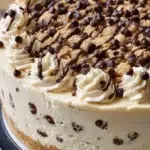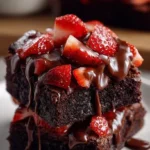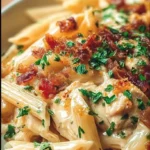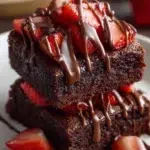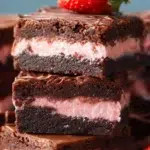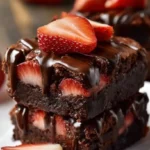Chicken Korma is a cherished classic across both South Asian and Middle Eastern culinary traditions. Known for its silky smooth gravy, rich aroma, and melt-in-the-mouth chicken, it has become a global favorite. This article explores the origins, ingredients, cooking techniques, and variations of chicken korma, while also sharing tips to make it perfect at home.
Looking for more delicious inspirations? Don’t miss our guide on Butternut Squash Soup .
Table of Contents
What is Chicken Korma?
The Origins of Chicken Korma
Chicken Korma has roots in Mughlai cuisine, where it was first prepared for royal feasts. The word “Korma” comes from the Urdu word qormā, meaning “to braise.” Traditionally, meat was slow-cooked with yogurt, nuts, and spices to create a velvety sauce. Over time, different regions gave the dish their own twist, adding ingredients like coconut, cream, or saffron.
Why Chicken Korma Stands Out Among Curries
Unlike fiery curries, chicken korma is milder yet deeply flavorful. The blend of yogurt, cream, nuts, and spices makes it luxurious, perfect for festive occasions. What sets it apart is the balance—fragrant spices without overwhelming heat.
Essential Ingredients for Chicken Korma
Key Spices That Define the Flavor
A traditional korma uses ground coriander, cumin, cardamom, cinnamon, cloves, and bay leaves. Saffron or mace may be added for extra richness. Every layer of spice adds depth and builds the dish’s distinctive aroma.
Proteins, Nuts & Dairy in Korma
The star protein is chicken, but lamb and beef versions exist too. A rich base is created using cashews, almonds, or coconut. Yogurt or cream provides smoothness and depth. The choice of nuts can slightly change the taste—almonds make it nutty, cashews bring a mild sweetness.
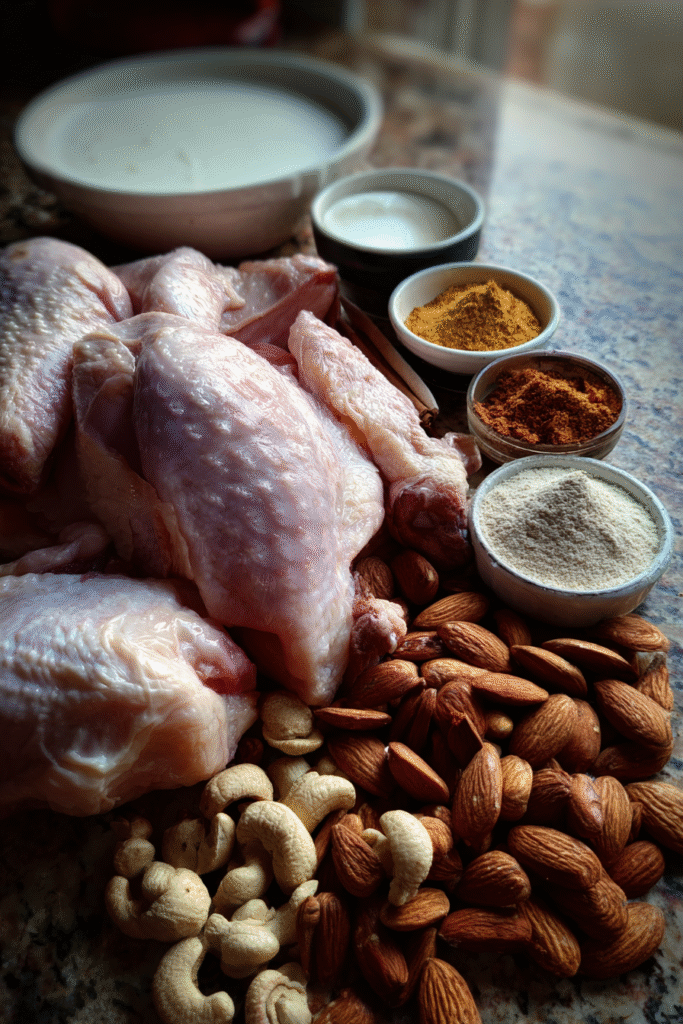
Check out more creamy delights in our Creamy Recipes Guide.
How to Make Authentic Chicken Korma
Step-by-Step Preparation
- Marinate chicken with yogurt, ginger, garlic, and spices.
- Onions are fried to a golden hue and then blended into a smooth paste.
- Cook chicken with the onion paste, nuts, and yogurt.
- Simmer gently until the chicken is tender and the sauce thickens.
- Complete the dish with a touch of cream, saffron, or kewra water to enhance its fragrance.
Common Mistakes to Avoid
- Cooking at high heat can curdle yogurt.
- Skipping the onion paste reduces richness.
- Adding water early makes the sauce watery.
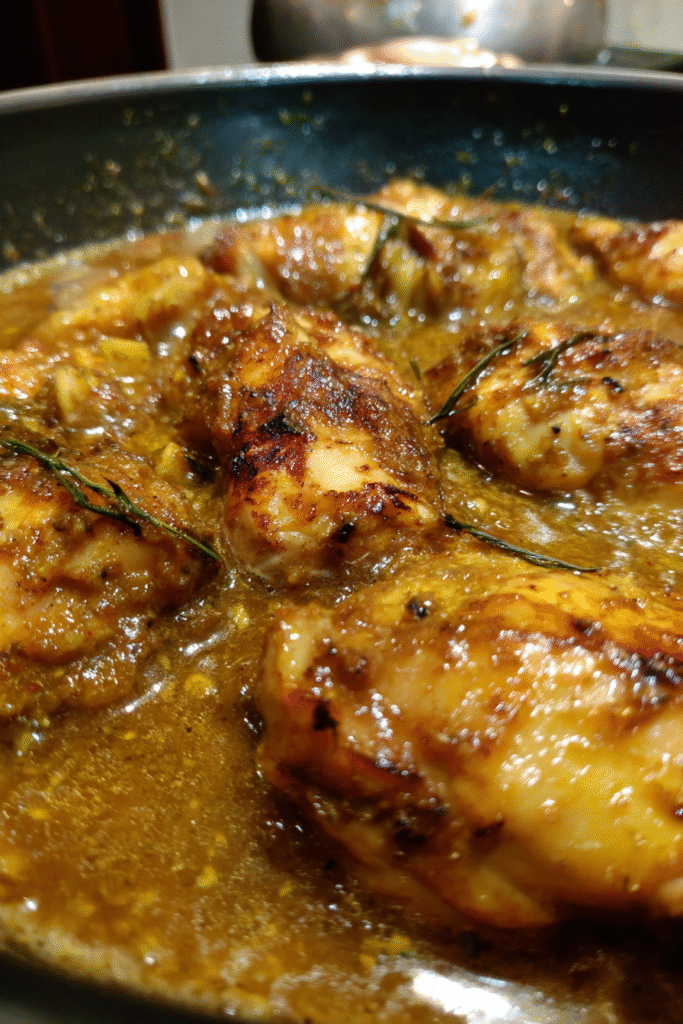
For more cooking techniques, discover our Quick Kitchen Sauce Ideas.
Popular Variations of Chicken Korma
North Indian Style Korma
Uses saffron, cashews, and cream for a royal touch. The gravy is lighter and pairs well with naan.
South Indian Style Korma
Often includes coconut milk and curry leaves, making it slightly spicier and more aromatic.
Looking for inspiration? Try our Peach Cake Recipe .
Best Side Dishes to Serve with Chicken Korma
Classic Indian Breads
Naan, roti, and paratha are perfect companions. Their chewy texture soaks up the rich gravy beautifully.
Rice Varieties for Perfect Pairing
Steamed basmati rice or jeera rice balances the richness of korma. Biryani rice can also be served for a festive meal.
Don’t miss our tasty Italian Sandwich Recipe for a quick side option.
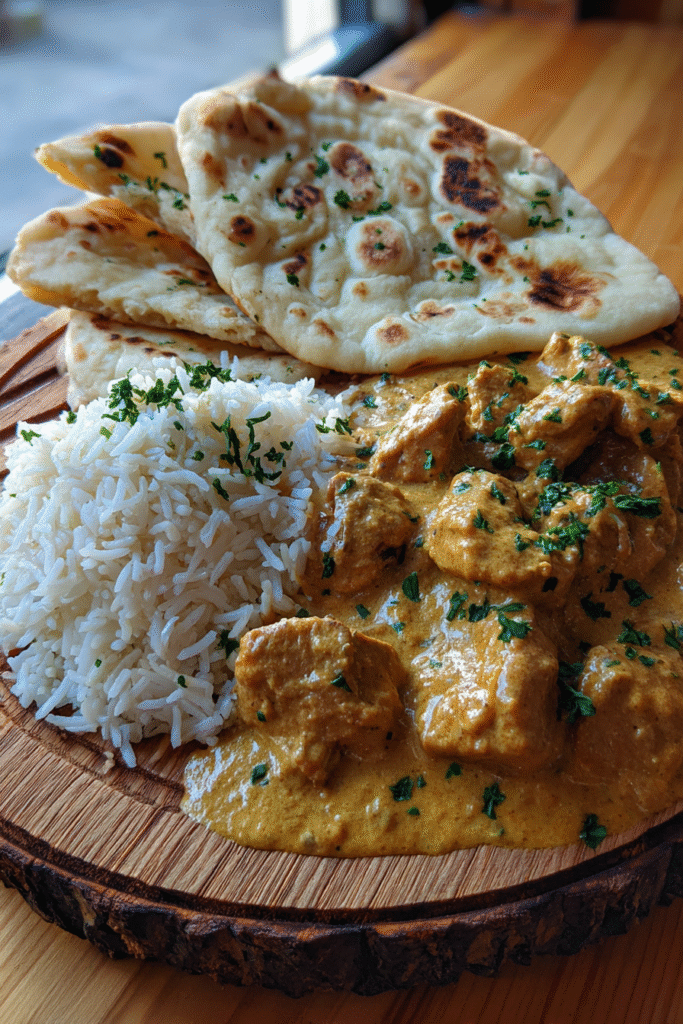
For more recipes follow me in Facebook and instagram .
Frequently Asked Questions About Chicken Korma
Is Chicken Korma spicy?
Chicken Korma is usually mild compared to other Indian curries. The cream, yogurt, and nuts balance the spices, making it rich but not overwhelmingly hot. However, you can adjust the heat level by adding green chilies or red chili powder.
What is the difference between Chicken Korma and Butter Chicken?
Butter Chicken has a tomato-based sauce with a hint of sweetness, while Chicken Korma has a nutty, yogurt-based gravy. Korma is creamier and milder, while butter chicken leans more toward tangy flavors.
Can Chicken Korma be made without nuts?
Yes, you can make nut-free Chicken Korma by using coconut milk or cream as a substitute. The texture will remain creamy, but the flavor will be slightly different.
How long does Chicken Korma take to cook?
On average, Chicken Korma takes about 45–60 minutes, depending on the cut of chicken and whether it’s bone-in or boneless. Bone-in chicken gives more depth to the gravy but may take longer to cook.
What is the best way to store Chicken Korma?
You can refrigerate Chicken Korma in an airtight container for up to 3 days. For longer storage, freeze it for up to 2 months. Reheat gently to avoid curdling the yogurt base.
What can I serve with Chicken Korma besides rice or naan?
You can pair Chicken Korma with pilaf, couscous, or even crusty bread. A fresh cucumber salad also balances the richness.
Conclusion
Chicken Korma is more than just a curry—it’s a dish that carries royal heritage and timeless appeal. With its creamy base, fragrant spices, and tender chicken, it’s no wonder this dish remains a favorite in kitchens worldwide. Whether you’re preparing it for a family dinner or a festive occasion, Chicken Korma always delivers warmth, comfort, and elegance.
If you enjoyed this guide, discover great ideas like our Dark Chocolate Ganache Tart.
Print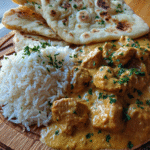
Chicken Korma Recipe – A Rich & Flavorful Classic Dish
- Total Time: 1 hour
- Yield: 4 servings 1x
Description
Chicken Korma is a rich and creamy curry made with tender chicken, yogurt, nuts, and fragrant spices. This classic dish is mild yet flavorful, perfect with naan or rice.
Ingredients
- 500 g chicken (bone-in or boneless, cut into pieces)
- 1 cup plain yogurt
- 2 medium onions (sliced and fried until golden, then blended into a paste)
- 1/4 cup cashews or almonds (soaked and ground into a paste)
- 2 tbsp fresh cream
- 1 tsp coriander powder
- 1 tsp cumin powder
- 2 green cardamoms
- 1 cinnamon stick
- 2 cloves
- 1 bay leaf
- 1 tbsp ginger-garlic paste
- 2 tbsp ghee or oil
- 1/2 tsp turmeric powder
- 1/2 tsp garam masala
- 1–2 green chilies (optional, for extra heat)
- Fresh coriander leaves (for garnish)
- Salt to taste
Instructions
- Marinate the Chicken: Mix yogurt, ginger-garlic paste, turmeric, salt, and half the spices. Coat the chicken and marinate for at least 30 minutes.
- Prepare the Base: Fry onions until golden brown, then blend into a smooth paste. Grind cashews/almonds into a fine paste.
- Cook the Chicken: Heat ghee or oil in a pan, add cardamom, cinnamon, cloves, and bay leaf. Add marinated chicken and cook until lightly browned.
- Build the Curry: Stir in onion paste and nut paste. Add remaining spices and mix well.
- Simmer: Add 1 cup of water and let the chicken cook on low heat until tender and the gravy thickens (about 25–30 minutes).
- Finish: Stir in fresh cream and sprinkle garam masala. Garnish with fresh coriander.
Notes
- Use bone-in chicken for deeper flavor.
- To make nut-free Korma, replace cashews/almonds with coconut milk.
- Korma pairs best with naan, roti, or steamed basmati rice.
- For a lighter version, skip the cream and use only yogurt.
- Prep Time: 20 minutes
- Cook Time: 40 minutes
- Category: Dinner / Main Course
- Method: Braising / Simmering
- Cuisine: Indian, Mughlai
Nutrition
- Serving Size: 1 portion (1/4 recipe)
- Calories: 430 (lighter version ~310)
- Sugar: 6 g
- Sodium: 670 mg
- Fat: 28 g (lighter version ~17 g)
- Saturated Fat: 10 g (lighter version ~5 g)
- Unsaturated Fat: 14 g
- Trans Fat: 0 g
- Carbohydrates: 15 g
- Fiber: 3 g
- Protein: 32 g
- Cholesterol: 95 mg




